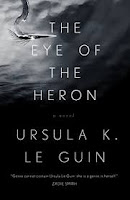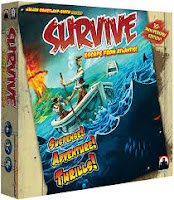While for some Ursula Le Guin is the writer of the Earthsea series, and for others the creator of the gender-bender Left Hand of Darkness, I don’t often get the impression many online have taken the effort to read bigger chunks of Le Guin’s expansive oeuvre. Though having read almost if not all the Hainish stories, written a thesis on Earthsea, and dabbled in random novels, collections, and stories, I personally feel as I’ve only climbed half of Le Guin mountain. But from my current view, I have the feeling The Eye of the Heron (1978) is something of a summary representation of Le Guin, as overt as it may be.
Working with the British model of the 18th and 19th centuries, The Eye of the Heron is based on the idea of sending society’s criminals and otherwise unwanted to another place. In the novella’s case, it is another planet far from Earth. Colonized in two waves, the first wave established societal and cultural order built around the traditional Western idea—leaders, police, gender roles, etc. The second wave, however, went for something different: rule by referendum and common sense, underpinned by pacifism ideology. Pushed outside the established city, these Shanti-towners trade the food they grow to the city dwellers for metal, technology, and other critical items. But while trade may be a cyclical, balanced area, authority is not. The city-dwellers considering the Shanti-towners a lesser but necessary people, relations take a turn for the worse when a large group of Shanti-towners make the decision to strike out across the mountains to establish a new town closer to the sea.











